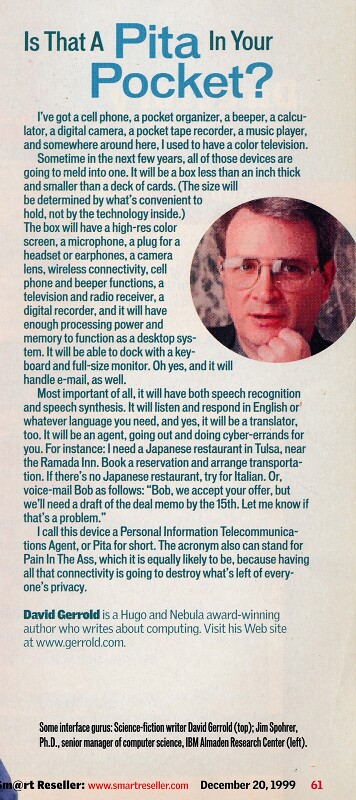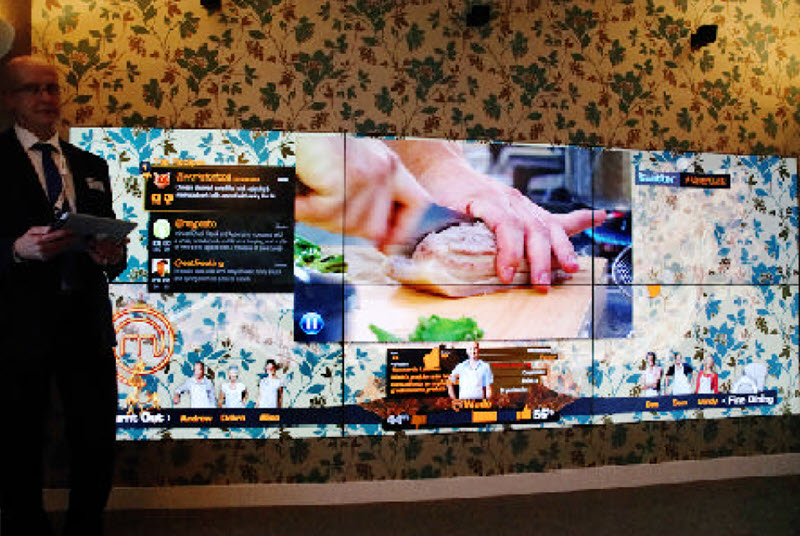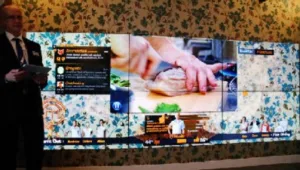Everybody knows that nobody can predict the future. Many of the forecasts I have had to make over the years have been dependent on exchange rates. If I could forecast exchange rates for just a few minutes, I wouldn’t be in front of my computer writing a Display Daily on a lovely spring evening!
There are dozens of stories about forecasts that were horribly wrong – many of them probably apocryphal – but including apparent statements by IBM’s Thomas Watson about the number of computers needed in the world (apparently five), the lack of a market for a home computer by Ken Olsen of DEC and that the internet would collapse by Robert Metcalfe, founder of 3Com (here is the source of all of those).
In displays, a friend (he knows who he is) forecast that LCDs would never be used for monitors and I have a bet on with my friend Jon Peddie about the rapid adoption of AR (I have no doubts about the adoption, but I have a lot of doubts about the ‘rapid’). One of the analysts that worked for me saw the iPad announcement and forecast a disaster for Apple.
So it’s nice to see someone get a forecast really, really right. I’m on a technology writers’ mail list and one of the regular contributors is Esther Schindler, and in 1999, she asked a science fiction author, David Gerrold, to write a short piece about the future of technology. His insight is uncanny, given that this was eight years before the launch of the iPhone and almost 20 years before the scandal of Cambridge Analytica.
 Gerrold’s 1999 predictions – click for higher resolution
Gerrold’s 1999 predictions – click for higher resolution
One of the most impressive features of the forecast is that Gerrold didn’t see a problem in the display catching up with all the other technology. That’s impressive as LCDs were still expensive and relatively large and heavy. There was a move towards higher resolutions at that time and in my SID report in 1999 I reported on work being done by IBM which was showing a 200 ppi LCD at the show. NEC was regarded as one of the makers of high resolution displays and had a 1600 x 1200 11.3″ LCD at the event with 177ppi. However, a small display of smartphone size shown at SID was an NEC 6.5″ VGA (640 x 480 – about a sixth of FullHD) LCD had 300 cd/m² of output, but used 5W of power – it wouldn’t have lasted long on a smartphone battery and it was 11mm thick – thicker than most phones. It also weighed 270 gms!
(The most desirable LCD at the show was a 1920 x 1200 24″ panel from Samsung that was for HDTVs and monitors. Believe it, or believe it not, the pricing quoted at SID for this was $30,000 for a sample and “as low as” $15,000 for mass production!).
After the tweet highlighting Gerrold’s forecast went viral, he wrote another article about robots and their functions and published by HP Enterprise. I wouldn’t argue with much of what Gerrold says, but it’s intriguing to me that nothing that he talks about in his vision (which is basically about robotics) actually involves bigger, better, cheaper or higher performing displays. (By coincidence, just as I was finalising this article, this video of robots in a Spanish car factory turned up in my inbox. Have a look if you like balletic robots)
I was, for many years, sceptical about the development of ‘wall scale’ displays for the home, but turned the corner and saw the demo by NDS at IBC in 2012 that it developed as part of ‘Project Fresco’, an attempt to look at the practical issues (for example in control and audio) of using a very large display (the demo had six 55″ LCDs in a wall as the main display). The company even mapped the wallpaper from the demo onto the screen to make the impression more seamless. (Check the YouTube video)
 The NDS Project Fresco at IBC in 2012. Image:Meko
The NDS Project Fresco at IBC in 2012. Image:Meko
Unfortunately, after NDS was bought by Cisco, the project was not developed and I understand that the team was dispersed. I was reminded of that project recently as Cisco is in the process of divesting itself again of the acquisition (Cisco NDS Sale Negotiations Circle Back to Original Owner – subscription required). That’s a shame – the NDS concept shown on a 130″ roll up 8K OLED (combining LG & NHK demos of the last year in my imagination) is likely to be the best TV that I will ever own! (at least in 2D)
Back in the 1980s, I learned that at any time, the vast majority of people think that whatever they have today is ‘good enough’, but the reality is that until we get to the limits of human perception, there will always be a push to increase the visual bandwidth of displays. That’s one of the reasons that 8K will, eventually, become the norm. (BR)
“Everything that increases visual bandwidth wins, in the end”.
(Bob’s Second Law)

